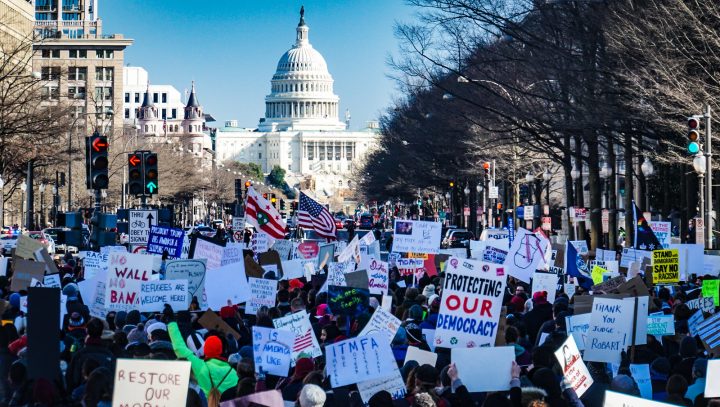By David Andersson
On a recent podcast entitled “How Only 3.5% of a Population Can Change Society, ” Sonali Kolhatkar interviewed Erica Chenoweth, co-author of the book Why Civil Resistance Works: The Strategic Logic of Nonviolent Conflict. The book describes a study of worldwide mass campaigns of nonviolent resistance against tyranny and colonialism from 1900 to 2006. The authors find that the nonviolence struggles were more than twice as effective as their violent counterparts in achieving their stated goals. The study also concluded that a nonviolent campaign requires the involvement of, on average, only 3.5% of population to be successful. For the US, that would translate into approximately 12 million people.
At some point in our collective history, we can all recall strong experiences of nonviolence organizing. In the middle of the last century, for instance, labor unions represented 40% of the work force, and thanks to that movement we got the 40-hour work week, collective bargaining, and social security. The African American community had great success with nonviolent action during the Civil Rights movement with the voting rights campaign.
Imagine if, instead of focusing on gaining power and doing nothing, politicians and organizations focused their energy and resources on organizing and mobilizing people. Imagining it is easy but making it happen is another story. Today, individualism has destroyed the social fabric, dis-empowering people and increasing levels of stress, fear and nihilism. Suicide is increasing by double digits and drug addiction is at record levels — signs that something is not going right.
Can this upcoming generation reconnect with our common humanity? Do the youth in Hong Kong fighting for democracy, the students in Europe who go on “strike” every Friday to pressure for climate change action, and the young people in the US who organized the March for our Lives against gun violence have something in common?
There are signs that something is in motion.They might take different forms or be about different issues but the basic method they share is the same: nonviolent mobilization that seeks to reach a critical mass. They share the understanding that no one will resolve any issue alone and that nothing will change until the powers that be are replaced by a new set of people with a different sensibility and working with a different set of values.






